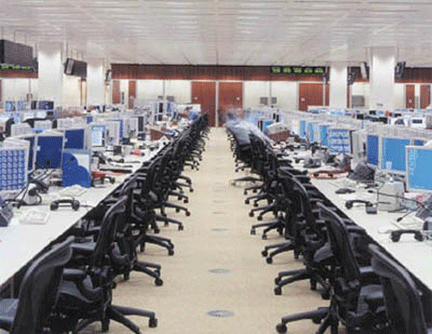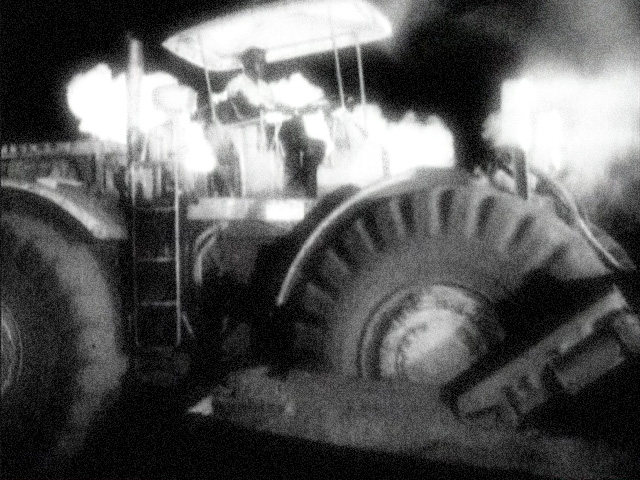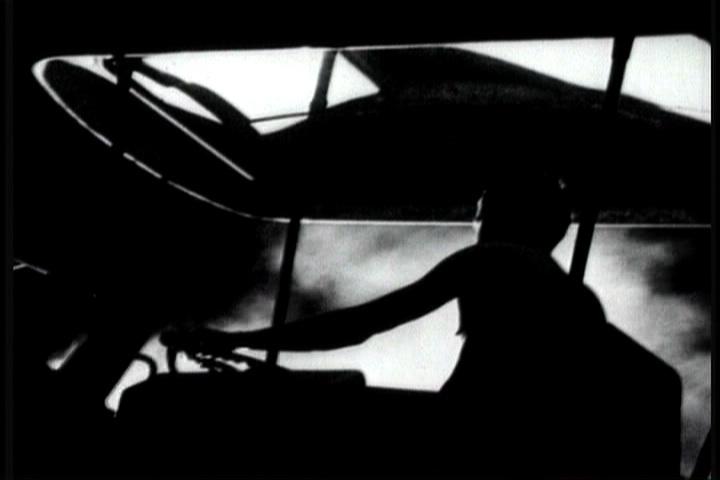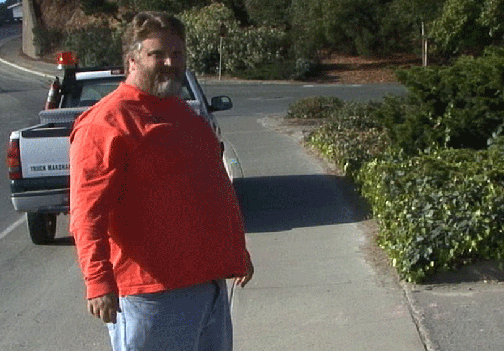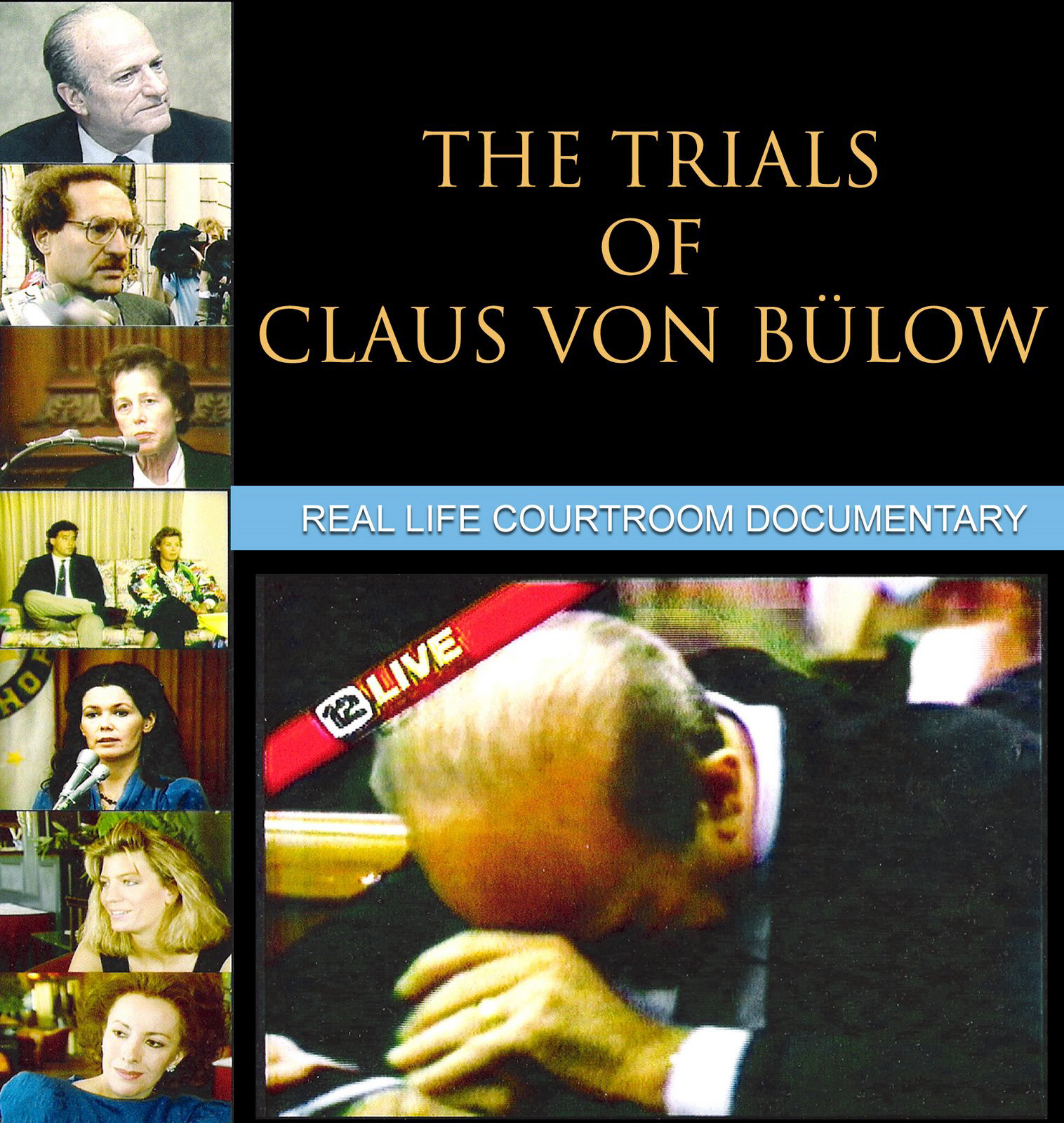I’m making a documentary about Jamie. He used to be on Wall Street working for Merrill Lynch as a trader.
One day, he wakes up in the morning and says, “Stuff this. I’m as mad as hell and I’m not going to take it anymore.” Sound familiar?
Chucks his job. Grabs his GF and moves to CA. Re-born as a Pinot Noir winemaker.
Finds the fruit. Buys it, crushes it with his and GF’s feet (honest). Blends it, bottles it, sticks the labels on and even delivers the boxes himself.
He’s as happy as Larry Jordan, having escaped his Merrill Lynch hell. SO WHAT’S YOUR MERRILL LYNCH HELL?
Hmmm… Mine? No-brainer…
Yesterday, I shoot in a San Ramon park — 1, 2, 3, 4 THs — then we drive to UCSF to shoot another TH. That’s 5.
Drive home and Burton is waiting for us with — you guessed it — another TH. Aaarrgh! So 6 on Friday.
How about Thursday? 1,2, 3, 4, 5 THs in a house in SF, then drive to National Kidney Foundation for another. That’s 6. Drive to SFCAPC Headquarters and shoot two more. Total 6+2=8.
Thursday + Friday = 14 TALKING HEADS.
My own Merrill Lynch hell.
And even though I’m as mad as hell — I guess it’s what we do and we’d better accept it if we are going to meet that mortgage payment next Wednesday.
Talking Heads look good if you separate them from the background. Which brings me to DOF.
Snip from Wikipedia:
In optics, particularly as relates to film and photography, the depth of field (DOF) is the distance in front of and beyond the subject that appears to be in focus.
For some images, such as landscapes, a large DOF may be appropriate, while for others, such as portraits, a small DOF may be more effective.
I use these three simple techniques:
CHROMAKEY SHALLOW FOCUS
This is the easiest. Tricia and I can set up and light a greenscreen interview in less than 15 minutes. It’s a formula but it works and the results are brilliant. You can do this inside or out.
Bingo. Instant out-of-focus backgrounds.
MOVING-MATTE SHALLOW FOCUS
I use Paul Crisp’s free 16-point garbage matte. Get it here.
Here’s winemaker Jamie. He’s actually doing a voiceover for me, I just let the camera run on auto. See how there is no separation between Jamie and his background. In fact the BG is brighter than Jamie.
Using the 16-point matte, I ding, ding, ding, ding around Jamie’s head on V2. Set the SMOOTH to 30 and the same on FEATHER EDGES.
V1 has the identical shot but with DEFOCUS blur from the FCP VIDEO FILTERS menu. I’m lazy, I use the default setting. I drop the luminance down to 85%. No need to go into the MOTION menu, just pull down the clip overlay line in the FCP timeline.
Now the hard part. Your subject, in this case Jamie, may dare to move. Paul Crisp’s matte has a center point. Shift that up, down, left and right in your key frame timeline. The matte will follow Jamie’s movements. You may need to add 10 or more key frames for a short interview.
It’s mechanical work. Requires no thought. You can drink Jamie’s wine and listen to Zeppelin at the same time.
OPEN-WIDE SHALLOW FOCUS
Do as the dentist says and add ND filters. Shoot wide open at F2 or wider.
Here I am in a San Ramon park for the National Kidney Foundation. Noah was born with kidney disease. He has a kidney donated by his dad.
I’m 7 feet from Noah. He’s about 6 feet away from the wire fence, maybe 30 feet from the trees. I’m using a Sony V1 with 1/4 inch chips.
I’ve put a ND 0.9 on the lens and thrown the Sony ND camera switch to add two more internal NDs. The result is F2 at 1080 60i. And look at that wire fence; anymore out of focus and it would disappear.
Who needs 35mm lens adaptors when simply opening up the iris reduces your DOF like this?
HONEY, I WANT THE BACKGROUND SOFT
Spend around $6,500 on, say, a P+S Technik Mini35mm adapter and then, say, another $3,500 on a set of Nikon 35mm lenses. Now your humble Sony Z1 has the same depth of field as a regular 35mm movie camera. However besides spending 10 grand, you’ve also lost a stop and a half of light, which on 1/3″ & 1/4″ chip cameras is serious. Not only that, for the price of the Sony camera plus the P + S thingy, you could have bought a 2/3″ Panasonic camera!
Here is shallow DOF from a DV camera. It’s a frame grab from cinematographer Katie Milwright’s “Last Stop”. Beautifully shot on standard def. PAL DV with a P + S Technik adapter. For me, it’s a tad too soft but I guess that’s THE FILM LOOK Katie wanted.
See it here.
SEEMED LIKE A GOOD IDEA AT THE TIME
Three years ago, I bought the cheaper, locally made 35mm lens adapter. You know the one that turns the picture upside down. It was their first model and it didn’t perform. I complained at NAB 2006. Was told it worked better with Panasonics than with the Sony Z1. Huh? Their web site didn’t say that.
Later, I complained again. “Don’t send it back. We have good news, Stefan. You’re the first to hear this, a real break through – there’s a new HD Diopter”.
Another $275 later, I’m experimenting again. My family is growing tired of being hauled in to sit still while I fiddle, fiddle, fiddle with the adapter.
Finally, I take the 35mm adaptor beasty with its new diopter out on an easy shoot in Phoenix, Arizona. You guess it… a series of THs one after the other.
Yikes! My #@!$%* 35mm lens adaptor is all out of whack again. Fiddle, fiddle, fiddle.
Try my usual lighting set up. Nope, it needs more light. Bring everything in closer, brighter. Her eyes are sharp but her hair is soft and of course the picture is UPSIDE DOWN. She leans forward. Aaarrgh. Her hair is sharp; her eyes are out of focus. Even worse, her nose is sharp; her ears are out of focus. Was it me or the adapter? I don’t know. My biggest, scariest, screw up in years.
And you know what? It didn’t look like film. It looked like an image projected onto ground glass – an upside down image to boot.
I love eBay; what a boon for early lens adapter adopters. Sold for more than I paid for it!
My friend, L.A. cameraman, Dan Coplan SOC, says the product in question has improved a lot since I bought it. Sorry Dan, I want it to work straight out of the box. Not, the “You need our new HD diopter” crap. Give me instant gratification.
CITIZEN KANE
Gregg Toland, he who shot Citizen Kane. (But you knew that, didn’t you?)
Here’s another snip from Wikipedia:
Toland’s techniques have proved to be a revolution for the art of cinematography. Before him, shallow depth of field was used to separate the various planes on the screen, creating an impression of space, as well as stressing what mattered in the frame by leaving the rest (the foreground or background) out of focus.
With Toland’s lighting schemes, shadow was a much more interesting tool, dramatically as well as pictorially, to separate foreground from background and thus to create space within a two-dimensional frame while everything was in focus. This technique was also, according to Toland, more comparable to what the eyes see in real life, since our vision does not blur what we look at, but what we do not look at.
So while we are trying to reduce DOF in search of the holy grail of THE FILM LOOK, Toland, the best cameraman in the world, was out there increasing DOF. He called it pan-focus or DEEP FOCUS.

Here's Toland himself center frame, an actor in the background and Toland's camera assistant in the foreground. Left photo: foreground out of focus. Right photo: background out of focus.
Below, a single photo from a double-page spread in the May 26, 1941 issue of Life. Using pan-focus, both the FG and the BG are in sharp focus, but what happened to his arm? Is he double-jointed or what?
Think about it. He who knows what he’s doing, wants the foreground and background sharp. While, you and I with our baby video cameras, want the background soft and fuzzy.
And why? It’s all in search of the Holy Grail (drum roll, cymbal) THE FILM LOOK.
HONEY, I SHOT THE KIDS
Last week I photographed 20 school kids, one by one.
I had the 1080 60i HDMI output of my Sony V1 camera going straight into a Sony HD 1080 monitor. Uncompressed. No filters. No 24P. Just PURE VIDEO. It looked amazing. So clean. So transparent. Perfect as is.
Looking at those fresh, young faces on the HD screen, I thought, “If video had been invented first and film second, we’d be out there trying to create THE VIDEO LOOK.”

